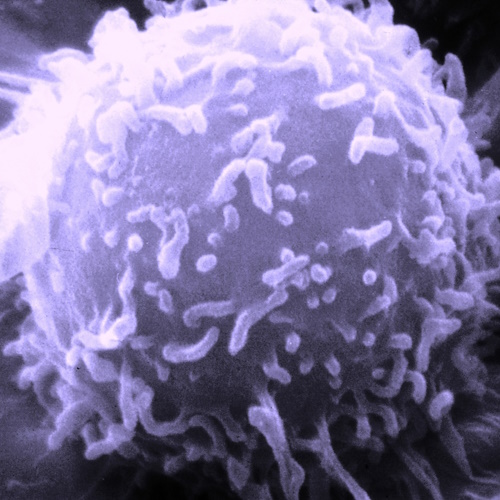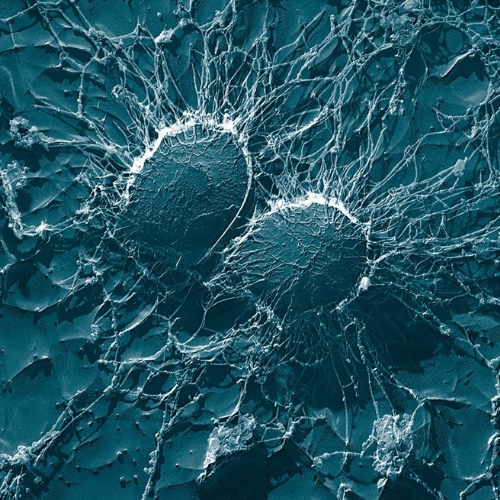Human beings age differently. Across the globe, women tend to live longer than men. This gender gap in life expectancy ranges from four to six years. But what causes this divide? A growing body of research points toward the immune system. The study “Sexual dimorphism in immunity and longevity among the oldest old,” published in *Frontiers in Immunology*, explores this idea.
It focuses on how immunity differs between men and women as they age. These immune differences may help explain why women live longer. But longevity is not just about genes. It also includes environment, hormones, and the gut microbiome. This review pulls together evidence from studies involving centenarians—the people who live past 100. It shows how biology, lifestyle, and environment shape aging in different ways for men and women.
Genetics and immunity: a female advantage
From birth, women seem to have an edge. The X chromosome, which females have two of, carries hundreds of immune-related genes. In contrast, males have one X and one Y chromosome. Some genes on the second X in women escape inactivation. This gives women an extra dose of gene expression, especially in immune cells.
These genes help produce proteins that regulate inflammation and fight infections. As a result, women tend to have stronger immune responses. They clear infections faster and are more likely to survive them. This may also explain why autoimmune diseases are more common in women—stronger immunity sometimes turns against the body.
Men, however, often have weaker responses to infections. Their immune systems age faster. They produce fewer protective T cells and more inflammatory cytokines. This trend becomes more evident in old age, and even more so among centenarians.
Age-related shifts in immune cells
The immune system changes with age. In both sexes, cell counts decline. But the pace and pattern differ. Young girls have more CD4+ helper T cells. Boys have more CD8+ cytotoxic T and natural killer (NK) cells. These differences persist into adulthood.
With aging, the female immune system shows a slower decline. Women maintain higher CD4+ counts and better B cell activity. Men lose immune cells more quickly. Studies show a steeper reduction in T cell subtypes among aging men. In centenarians, women have a richer pool of naïve and memory immune cells.
Natural killer cell levels also rise with age in both sexes. But male centenarians show a higher percentage of mature NK cells. These cells are critical for detecting infected or cancerous cells. So, even though women dominate the centenarian population, men who reach this age may be biologically younger in some aspects.
Sex-specific gene expression on X chromosome
As people age, the expression of immune-related genes changes. Some genes decrease activity, reducing immune efficiency. This decline happens in both men and women, but the effects vary due to sex chromosomes.
Genes like DDX3X, important for antiviral defense, reduce their expression with age. So do SH2D1A and XIAP, both involved in T cell regulation. Interestingly, the gene WAS, which supports immune cell signaling, increases with age—mainly in women.
Another example is TLR7 and TLR8. These toll-like receptor genes sit on the X chromosome. They help detect viruses and trigger immune responses. In women, both copies of these genes may remain active. This boosts their antiviral defenses but also increases the risk for autoimmune diseases.
In contrast, older men often experience a mosaic loss of the Y chromosome. This event, known as mLOY, links to cancer, Alzheimer’s, and heart disease. Men with mLOY show impaired immunity and disrupted gene regulation.
Environmental stress hits genders differently
Immune responses don’t only depend on biology. They also react to the environment. Men and women respond to external stressors in distinct ways. For instance, extreme heat affects women more. In European heatwaves, more women died due to a combination of biological sensitivity and social roles.
Sleep and stress also shape immunity. Women experience insomnia more often. They report longer times to fall asleep, more night awakenings, and lower sleep quality. These sleep issues may affect cognitive health, especially in elderly women.
Mood disorders show a similar trend. Depression and anxiety are more common in women. However, men with depression show a greater rise in inflammatory markers, like white blood cell counts. Even art therapy, like music, has a stronger immune and emotional effect in women.
These findings suggest that the environment influences each sex uniquely. These responses may impact health and lifespan.
Different infections, different responses
Women respond to infections more robustly. For HIV, women show stronger antiviral reactions and higher CD4+ T cell counts. They also recover faster with antiretroviral therapy. In untreated cases, females tend to have lower viral loads. In contrast, men often delay treatment or interrupt it more frequently.
In COVID-19, more men died. Male placentas showed higher expression of TMPRSS2, a gene that helps the virus enter cells. Adult males also displayed higher inflammatory responses and more severe outcomes. Women showed better T cell responses and quicker recovery.
Vaccination reveals more contrasts. Women tend to generate stronger responses but also report more side effects. Interestingly, women also hesitate more about getting vaccinated. This was observed in both COVID-19 and influenza vaccines.
Infections affect both sexes. But women seem more resilient during active illness, even if they experience stronger immune reactions.
Gut microbiome: a hidden player
Gut bacteria shape immune function. Men and women have different microbial compositions. These differences affect metabolism, mood, and disease risks. Women tend to have a higher ratio of beneficial bacteria. Men often carry species that promote inflammation.
In centenarians, gut microbiota shows unique patterns. Certain bacteria are linked to healthy aging. But sex differences exist here too. Male centenarians have more Clostridium and Eggerthella—species associated with unhealthy aging. Female centenarians show higher levels of Roseburia and Prevotella, which support anti-inflammatory activity.
Microbiome changes also influence disorders like autism, schizophrenia, and heart disease. Research into how the microbiome affects male versus female aging is still young. However, current evidence suggests that gut microbes may help explain sex-based health outcomes in old age.
Reproductive conditions and microbiome links
Some immune conditions are sex-specific. Take endometriosis and PCOS, for example. These disorders affect only women and are tied to immune shifts and microbiome changes.
In endometriosis, immune cells like NK and dendritic cells behave abnormally. Certain bacteria such as Escherichia coli and Shigella increase, while beneficial ones like Lactobacilli decrease. This contributes to inflammation and tissue overgrowth.
PCOS is another condition with low-grade inflammation. Women with PCOS have fewer activated T cells and more pro-inflammatory macrophages. Their gut bacteria also show unique profiles, often with high levels of Clostridiales and Bacteroides.
Interestingly, some male relatives of women with PCOS show similar hormone patterns. This hints at a possible genetic link, suggesting PCOS may have broader effects beyond the ovaries.
Longevity around the world: women lead, men thrive
More than 80% of the world’s centenarians are women. Japan has the highest rate, followed by France, Italy, and Greece. These countries share factors like good diet, strong healthcare, and active lifestyles. But longevity is not the same for all.
Women live longer, but male centenarians often have better physical and cognitive health. In Mexico, men even outnumber women among centenarians. Cultural, economic, and social conditions play a role here.
Genetic studies show women have more longevity-linked gene variants. Examples include APOE, TOMM40, and EXO1. In contrast, male-centric genes like IL6 link to long life in some populations but not others. Ethnicity affects these results, showing that genes alone don’t decide who lives longest.
Epigenetics and cognition in extreme aging
The epigenetic clock, which measures biological age through DNA methylation, runs slower in centenarians. Both men and women show this trend, but women tend to have more favorable patterns.
Still, some exceptions exist. In Italy and Greece, male centenarians showed faster epigenetic aging. Yet, their cognitive function correlated more strongly with mitochondrial activity than in women.
Cognition in women links more to sleep quality. Female centenarians with poor sleep scored worse in memory and orientation tests. These sex-specific differences highlight the many ways biology and lifestyle intersect at old age.
In conclusion: aging is gendered
This research shows that aging is not the same for everyone. Sex shapes immunity, metabolism, cognition, and disease. Women live longer, but men who reach very old age often show better physical and immune profiles.
The gut microbiome, immune genes, and environmental exposure all contribute to these patterns. Still, more human studies are needed. Most current data come from small cohorts or animal models.
Future research should focus on larger human groups. It should compare men and women directly, across ethnicities and lifestyles. Only then can we understand what drives healthy aging—and how to improve it for all.
The study is published in the journal Frontiers in Immunology. It was led by researchers from Sirius University of Science and Technology.






